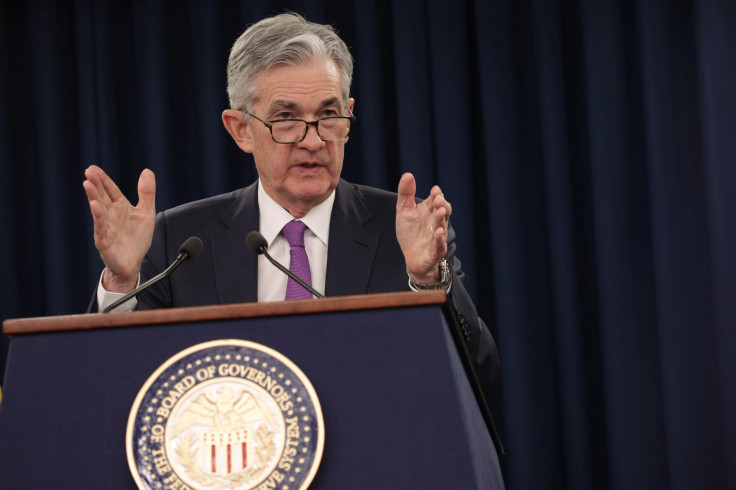Fed Rate Cut Expected On Wednesday: First Since Great Recession Of 2008

The U.S. Federal Reserve aims to keep the still strong but flagging U.S. economy on an upward trajectory with a widely expected quarter percentage point cut to the federal funds rate Wednesday. It will be the first rate cut since 2008.
Economists, however, warn a rate cut at a time of impressive economic growth and not weakness sends a very clear signal the economic expansion has run its course. That U.S. growth is decelerating can be seen by its staying stuck in the region of 2 percent for most of the past decade.
Analysts said the Fed’s target interest rate ranges from 2.25 percent and 2.50 percent. This level is half the Fed’s 5.25 percent level before the Great Recession of 2008. The impending cut will leave the Fed with little wiggle room to act in the event of a recession. Talk of a recession in 2020 is rising.
The deleterious impact of Trump’s trade war against the world also led to a stunning 5.5 percent fall in gross private domestic investment in the second quarter GDP. This is the worst decline in this category since 2015, and eliminated a full percentage point from the final GDP number.
Most economists interviewed by media expect anywhere from one to three rate cuts this year. There is almost a unanimous consensus the first cut Wednesday will be a quarter percentage point.
The Fed eventually expects to resume raising rates based on their June economic projections, indicating a rebound in 2021 and a somewhat higher Fed funds rate in the long-term. Besides the rate cut, analysts are looking for the Fed to indicate it's open to future cuts. They said it’s unlikely the Fed will promise future rate cuts, however.
“They’re not going to say that we’re done,” believes Stephen Stanley, chief economist at Amherst Pierpoint, who expects the Fed to cut rates just once and then stop.
“I think it would be too much of a leap for the market. My sense is they’ll leave the door open, but their aim is not going to be locked in for the next meeting. It’s clearly a function of how the data play out. I’m just more optimistic than they are about the how things are going to evolve.”
The small size of the upcoming reduction will end an era of gradual rate increases over the past decade designed to return the U.S. economy to a more normal state since the Great Recession of 2008. Efforts to re-ignite economic growth saw the Fed slash interest rates to near zero in a tactic now a ready tool for central banks worldwide.
The Fed “will signal they’re’ going to go on if conditions warrant,” according to Quincy Krosby, chief market strategist with Prudential Financial. "It’s clear the chairman and his cohorts are not looking at incoming data in the sense that they are data dependent. They made it clear they want to inoculate the economy."
Krosby also repeated the conventional wisdom the market is pricing in a 25 basis point cut.
“The chairman (Jerome Powell), who is in the camp that we need to have an insurance cut, is going to make the case that while the economic data are all gaining strength, they are still worried about weakening conditions, due to uncertainty regarding trade and tariffs.”
The Fed’s rate cut has been the subject of intense speculation since late 2018 with markets and world economies began exhibiting inescapable signs of deceleration.
© Copyright IBTimes 2025. All rights reserved.





















